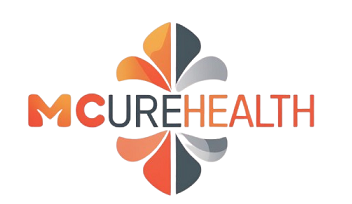
New treatment under trial could restore brain cells in Parkinson’s
- September 13, 2019
- 0 Likes
- 413 Views
- 0 Comments
New Treatment Under Trial Could Restore Brain Cells in Parkinson’s
Researchers are pioneering a groundbreaking therapy that aims to do what was once thought impossible: replace the brain cells lost to Parkinson’s disease. This experimental treatment represents a monumental shift from managing symptoms to potentially reversing the disease’s course.
The Core Problem in Parkinson’s Disease
Parkinson’s disease is primarily caused by the progressive loss of neurons (nerve cells) in a specific region of the brain called the substantia nigra. These neurons are vital because they produce dopamine, a chemical messenger (neurotransmitter) that is critical for controlling smooth, coordinated muscle movement.
As these dopamine-producing neurons die:
- Dopamine levels drop.
- The brain’s ability to control movement deteriorates.
- This leads to the classic motor symptoms of Parkinson’s: tremor, slowness (bradykinesia), stiffness (rigidity), and balance problems.
Current treatments (like the medication Levodopa) focus on replenishing dopamine levels. While effective for a time, they do not slow the underlying death of neurons and often come with significant side effects and diminishing returns over years.
The New Treatment: Stem Cell Therapy
The revolutionary approach currently in trials is stem cell-derived dopamine neuron replacement therapy.
How It Works:
- The Source – Stem Cells: Researchers start with pluripotent stem cells. These are master cells that have the potential to develop into any cell type in the body. They can be sourced from:
- Embryonic Stem Cells (ESCs): Derived from early-stage embryos.
- Induced Pluripotent Stem Cells (iPSCs): Adult cells (often from the patient’s own skin) that are scientifically “reprogrammed” back into an embryonic-like state.
- The Transformation – Laboratory Differentiation: In a highly controlled laboratory environment, these stem cells are coaxed through a specific chemical process to differentiate into precisely the type of dopamine-producing neurons that are lost in Parkinson’s.
- The Delivery – Surgical Transplantation: The newly created, healthy dopamine neurons are then surgically implanted into the precise areas of the patient’s brain that are affected by Parkinson’s (typically the striatum). The goal is for these new cells to integrate into the brain’s neural network, establish connections, and begin producing a natural, steady supply of dopamine.
The Potential Benefits
This approach is revolutionary because it addresses the root cause of the disease, not just the symptoms:
- Restoration, Not Just Management: It aims to physically replace the lost cells, potentially restoring the brain’s innate ability to control movement.
- Natural Dopamine Supply: If successful, the transplanted cells could provide a continuous, physiological level of dopamine, avoiding the fluctuations and “wearing-off” effects seen with oral medication.
- Potential to Slow or Halt Progression: By reintroducing functional neurons, the disease’s progression could be fundamentally altered.
Current Status and Key Clinical Trials
This is not just theoretical. Several clinical trials are actively underway:
- The European Trial (STEM-PD): Led by Lund University in Sweden and using embryonic stem cell-derived neurons, this trial recently implanted cells into the first human patients. Initial focus is on safety and tolerability.
- The US-Based Efforts: Companies like BlueRock Therapeutics (a subsidiary of Bayer) are running trials using derived embryonic stem cells. Another initiative, the Clinical Trial of Human iPSC-derived Dopaminergic Progenitors for Parkinson’s, is preparing to use patient-derived iPSCs, which could minimize the risk of immune rejection.
Important Caveats and Challenges
While the potential is enormous, it’s crucial to understand that this is still an experimental therapy in its early stages.
- Proof of Concept: The primary goal of current Phase I/II trials is to confirm the treatment is safe and well-tolerated. It will take several years to determine if it is truly effective.
- Technical Challenges: Ensuring the cells survive long-term, integrate correctly into the complex brain circuitry, and produce the right amount of dopamine without causing side effects (like involuntary movements called dyskinesias) is a huge hurdle.
- Immunological Response: Even with patient-derived iPSCs, the brain may still recognize the transplanted cells as foreign and attack them, requiring immunosuppressive drugs.
- Scalability and Cost: Manufacturing these specialized cells for a wide population under strict medical standards is a significant logistical and financial challenge.
Conclusion: A Hopeful Future
The development of stem cell therapies for Parkinson’s is one of the most exciting frontiers in neuroscience. While it is not a current cure and is not yet available outside of clinical trials, it represents a fundamental shift towards disease-modifying treatment.
If successful, this approach could transform Parkinson’s care from a lifetime of symptom management to a one-time procedure that restores function and halts progression, offering immense hope for millions of patients and families worldwide. The results from the ongoing trials over the next 5-10 years will be critical in determining if this promise can become a reality.



Leave Your Comment